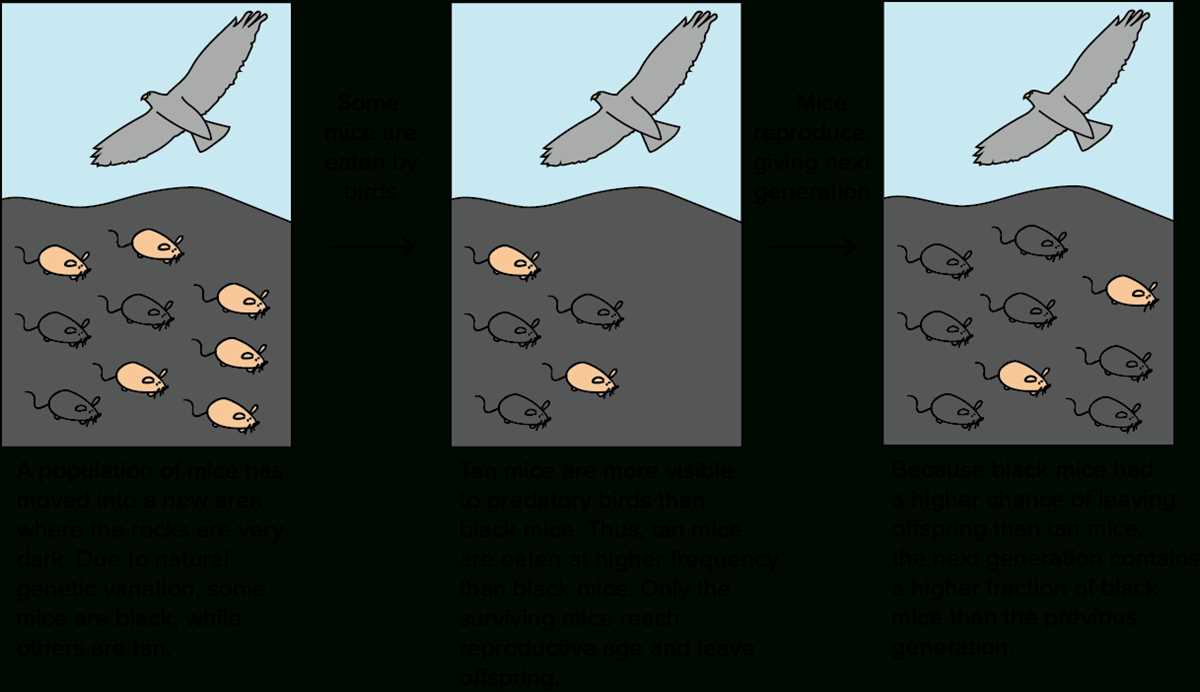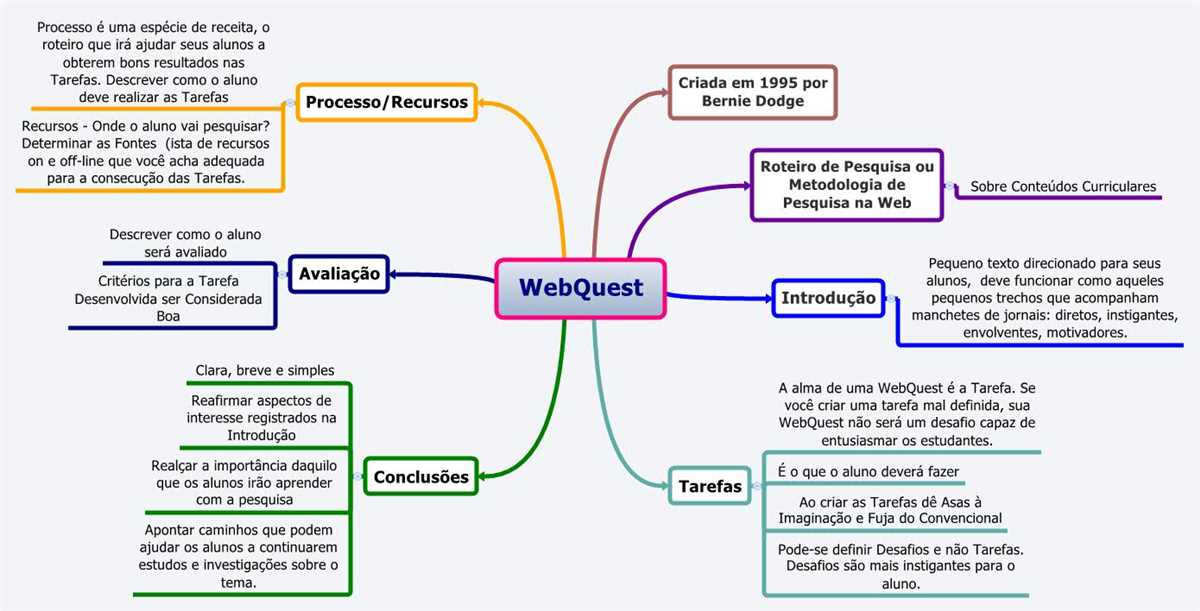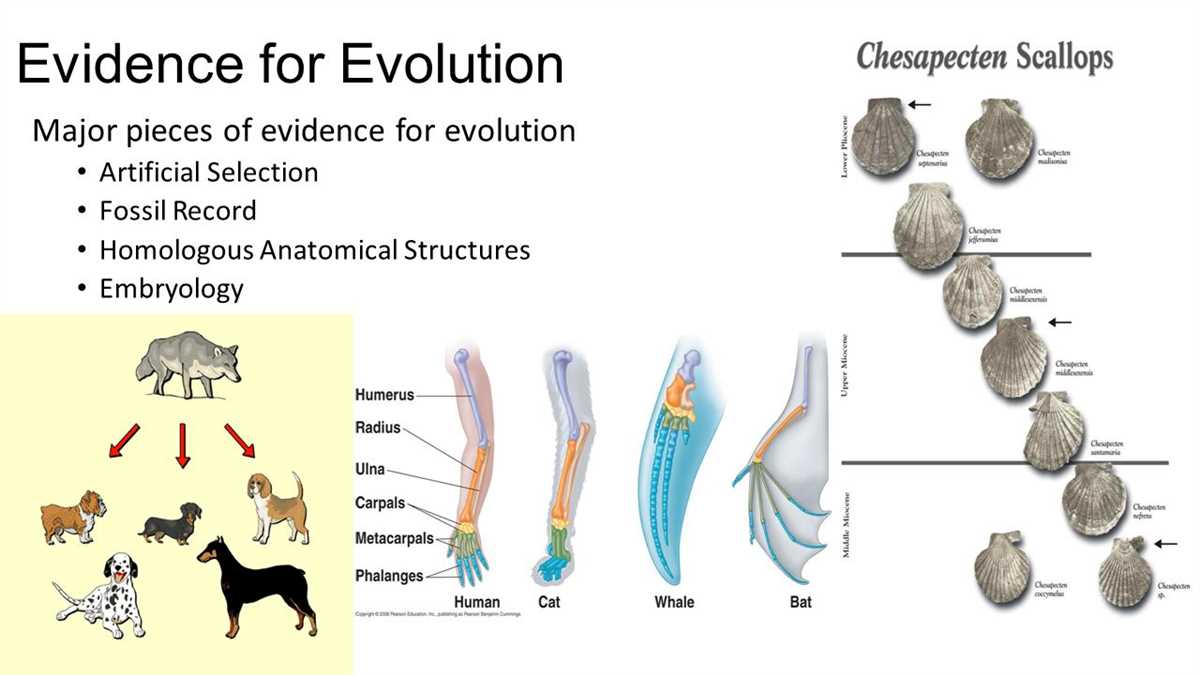
Understanding the concept of evolution and how it has shaped the diversity of life on Earth is crucial in the study of biology. The evidence supporting the theory of evolution is vast and comes from various sources, including fossil records, anatomical structures, DNA sequencing, and comparative studies of organisms.
Fossil records provide some of the strongest evidence for the existence of evolution. Fossils are the preserved remains of ancient organisms, and they give us a glimpse into the past. By studying the fossil record, scientists have been able to trace the evolution of different species over millions of years. The presence of transitional fossils, which exhibit characteristics of both ancestral and derived species, further support the idea of evolution.
Anatomical structures also provide evidence for evolution. Homologous structures, which are anatomically similar but have different functions in different organisms, suggest a common ancestor. For example, the forelimbs of bats, whales, and humans all have the same basic structure, despite being adapted for different purposes. This indicates that these organisms share a common ancestor and have evolved different functions over time.
Another piece of evidence for evolution comes from DNA sequencing. By comparing DNA sequences, scientists can determine the relatedness and evolutionary history of different species. For example, the similarities in DNA sequences between humans and chimpanzees are indicative of a common ancestor. DNA sequencing has also allowed for the study of genetic variations within and between populations, providing further insights into the process of evolution.
Evidence for Evolution Webquest Answer Key
In the “Evidence for Evolution Webquest,” students explored various types of evidence that support the theory of evolution. Throughout the webquest, they encountered different sources of evidence, each providing insights into the processes and patterns of evolution. The answer key summarizes the main findings of the webquest, highlighting the key points regarding evidence for evolution.
Fossil Record: The fossil record is one of the most significant pieces of evidence for evolution. Fossils provide a physical record of past life on Earth and show the progression and divergence of species over time. By examining fossils, scientists can determine how organisms have changed over millions of years and how new species have emerged.
Comparative Anatomy: Comparative anatomy involves comparing the physical structures of different organisms. Similarities in anatomy suggest a common ancestry and indicate that organisms share a common evolutionary history. The webquest highlighted examples of homologous structures (such as the forelimbs of mammals) and analogous structures (such as the wings of birds and insects), both of which support the theory of evolution.
Embryology: Embryology studies the development of organisms from fertilization to birth or hatching. Similarities in embryonic development among different species provide evidence of shared ancestry. The webquest explored the concept of embryonic homology, where embryos of different vertebrates exhibit similar structures and developmental stages, further supporting the idea of common descent.
Biogeography: Biogeography examines the distribution of plants and animals across different geographic areas. The geographical distribution of organisms can provide insights into their evolutionary history, as distant populations may have diverged due to isolation and adaptation to specific environments. The webquest discussed how the distribution of species on different continents supports the theory of evolution.
Molecular Biology: In recent years, molecular biology has become a powerful tool for studying evolutionary relationships. By comparing the DNA and protein sequences of different organisms, scientists can determine how closely related they are and construct evolutionary trees. The webquest explored the use of DNA and protein sequence data to investigate the relationships between various species.
Overall, the “Evidence for Evolution Webquest” provided students with a comprehensive understanding of the different types of evidence that support the theory of evolution. By examining fossils, comparing anatomical structures, studying embryonic development, analyzing biogeographical patterns, and utilizing molecular biology techniques, scientists can piece together the story of life on Earth and the processes that have shaped it over billions of years.
Fossil Records

The fossil record is one of the most important pieces of evidence for evolution. Fossils are the preserved remains or traces of organisms that lived in the past. They provide a snapshot of the history of life on Earth, allowing scientists to study the diversity and evolution of different species over time.
Fossils can be found in various types of rocks and can range in age from a few thousand years to billions of years old. They can provide information about the anatomy, behavior, and habitat of extinct species, as well as their relationships to modern organisms. By comparing fossils from different time periods, scientists can track the changes in species over time and identify patterns of evolution.
The fossil record also provides evidence for transitional forms, which are species that show characteristics of both their ancestral species and their descendants. These transitional forms are important in understanding how one species evolves into another, as they represent intermediate stages in the evolutionary process. For example, the discovery of fossils of the bird-like dinosaur Archaeopteryx provided crucial evidence for the evolution of birds from reptilian ancestors.
In addition to providing evidence for evolution, the fossil record also helps scientists determine the relative ages of rocks and the geological time scale. By studying the layers of sedimentary rocks containing fossils, scientists can establish a timeline of Earth’s history and understand the order in which different species appeared and went extinct. This allows them to reconstruct the past environments and ecosystems, providing valuable insights into how life on Earth has changed over time.
Comparative Anatomy

Comparative anatomy is the study of similarities and differences in anatomical structures across different species. By comparing the anatomy of different organisms, scientists can gain insights into their evolutionary relationships and understand the patterns of structural change over time.
One key concept in comparative anatomy is homology. Homologous structures are similar in structure and origin, but may have different functions in different species. For example, the forelimbs of humans, bats, and whales all have similar bones, indicating a common ancestor with forelimbs adapted for grasping or swimming. These homologous structures provide evidence for the common ancestry of these species.
Another concept in comparative anatomy is convergent evolution. Convergent evolution occurs when different species independently evolve similar traits or structures in response to similar environmental pressures. For example, the wings of bats and birds are not homologous, as they have different underlying anatomies. However, they have converged on a similar structure due to their shared need for powered flight.
Comparative anatomy also considers vestigial structures, which are remnants of structures that were functional in ancestral species but have lost their original function in descendants. The presence of vestigial structures in different species can provide evidence for their common ancestry and the process of evolution.
In conclusion, comparative anatomy plays a crucial role in providing evidence for evolution. By comparing the anatomy of different organisms, scientists can identify homologous structures, observe convergent evolution, and study vestigial structures. These comparative studies contribute to our understanding of the evolutionary relationships and adaptations of different species.
Molecular Biology

Molecular biology is a field of study that focuses on the structure and function of biological molecules, particularly nucleic acids and proteins. It plays a crucial role in understanding the mechanisms of evolution and providing evidence for the theory of evolution.
One of the key pieces of evidence for evolution provided by molecular biology is the similarity in DNA sequences between different organisms. DNA is the genetic material that carries hereditary information, and comparing the DNA sequences of different species allows scientists to determine their evolutionary relationships. The more similar the DNA sequences, the more closely related the species are believed to be.
Another important aspect of molecular biology in understanding evolution is the study of genes and how they are expressed. Genes are segments of DNA that contain the instructions for building proteins, which are the molecular machines that carry out most of the work in living cells. By studying the relationships between genes and their protein products, scientists can trace the evolutionary history of different traits and determine how they have changed over time.
In addition to DNA and genes, molecular biology also encompasses the study of other molecules involved in cellular processes. For example, the study of proteins and their interactions provides insights into the evolution of molecular pathways and the functions of different organisms.
Overall, molecular biology provides compelling evidence for evolution by demonstrating the similarities and differences in the molecular structures and functions of different organisms. This field of study has greatly contributed to our understanding of the mechanisms of evolution and has helped to confirm the theory of evolution proposed by Charles Darwin.
Embryology
Embryology is the branch of biology that focuses on the development of embryos from fertilization to birth. It provides valuable evidence for evolution as it shows the similarities in the early stages of development among different species. This similarity suggests a common ancestry and supports the theory of evolution.
One of the key pieces of evidence for evolution provided by embryology is the presence of gill slits in the embryos of many different species. These gill slits are similar to the gills found in fish, suggesting that all vertebrates share a common ancestor with fish. This supports the idea that all vertebrates evolved from a common ancestor and have adapted to their specific environments over time.
Another piece of evidence from embryology is the presence of a tail in early stages of development in many species, including humans. This tail is eventually reabsorbed or forms the tailbone in humans, but its presence in the early stages suggests a common ancestry with other animals that have tails. This provides further support for the theory of evolution and the idea that all species share a common ancestor.
In addition to these specific examples, embryology as a whole provides evidence for the gradual changes that occur during development. By comparing the embryos of different species, scientists can identify similarities and differences that suggest evolutionary relationships. These similarities and differences, along with other lines of evidence, contribute to our understanding of the evolutionary history of life on Earth.
Biogeography

Biogeography is the study of the distribution of species and ecosystems across geographic space and through geological time. It examines the patterns and processes that shape the distribution of organisms and their interactions with the environment. Biogeography is an important field of study in evolutionary biology, as it provides evidence for the processes of evolution and the influence of geographic barriers on species diversification.
One of the key concepts in biogeography is the idea of vicariance. Vicariance occurs when a geographic barrier, such as a mountain range or a body of water, prevents the dispersal of a species and leads to the formation of distinct populations. Over time, these isolated populations can diverge genetically and become separate species. This process can be observed in the distribution of many species around the world, such as the marsupials in Australia and the lemurs in Madagascar.
The study of biogeography also provides evidence for the theory of continental drift, which states that the Earth’s continents have moved and continue to move over geological time. Biogeographical patterns, such as the similarities between the flora and fauna of different continents, can be explained by the movement of landmasses and the subsequent isolation and mixing of species. For example, the similarities between the marsupials of Australia and the placental mammals of South America are believed to be the result of a common ancestry and subsequent separation due to the separation of the continents.
In conclusion, biogeography provides valuable evidence for the processes of evolution and the influence of geographic barriers on species diversification. By studying the distribution of species and ecosystems, scientists can gain insights into the patterns and processes that have shaped the biodiversity we observe today.
Artificial Selection
Artificial selection, also known as selective breeding, is the process in which humans intentionally breed plants or animals to produce desired traits. This process has been used for thousands of years to produce domesticated plants and animals that are better suited for human needs.
In artificial selection, individuals with desirable traits are chosen as parents, and their offspring inherit those traits. Over time, this can lead to the development of new species or breeds, with characteristics that are different from their wild ancestors.
Examples of artificial selection:
- Crop domestication: Humans have selectively bred plants for thousands of years to produce crops with larger fruits, higher yields, and resistance to pests and diseases. Examples include wheat, corn, and tomatoes.
- Animal domestication: Humans have selectively bred animals for traits such as size, behavior, and product yield. Examples include dogs, cows, and chickens.
- Plant and flower breeding: Humans have selectively bred flowers for various characteristics such as color, size, and scent. Examples include roses, orchids, and tulips.
- Breeding of livestock: Humans have selectively bred livestock for meat production, milk production, and wool quality. Examples include cattle, sheep, and pigs.
Impact of artificial selection:
Artificial selection has had a significant impact on agriculture and the development of domesticated plants and animals. It has allowed humans to produce more abundant food supplies and improve the quality of agricultural products. Additionally, it has contributed to the diversity of species and breeds that we see today.
However, artificial selection can also have negative consequences. In some cases, excessive selective breeding for specific traits can lead to genetic problems, reduced genetic diversity, and decreased adaptability to changing environments.
In conclusion, artificial selection is a powerful tool that humans have used to shape the genetic makeup of plants and animals. It has played a crucial role in the development of modern agriculture and has contributed to the diversity of species and breeds. However, careful consideration must be given to the potential negative impacts of selective breeding to ensure the long-term sustainability and well-being of domesticated plants and animals.
Q&A:
What is artificial selection?
Artificial selection is the process by which humans selectively breed plants or animals for specific traits or characteristics.
How does artificial selection differ from natural selection?
Artificial selection is controlled by humans, who choose which plants or animals to breed based on desired traits. Natural selection, on the other hand, is the process by which individuals with advantageous traits survive and reproduce, leading to evolutionary change over time.
What are some examples of artificial selection?
Examples of artificial selection include the breeding of dogs for specific traits such as size or temperament, the domestication of crop plants, and the selective breeding of livestock for desired characteristics such as meat quality or milk production.
What are the advantages of artificial selection?
Advantages of artificial selection include the ability to rapidly produce plants or animals with desired traits, such as disease resistance or increased productivity. It also allows humans to shape the evolution of domesticated species to better suit their needs.
What are the potential drawbacks of artificial selection?
Potential drawbacks of artificial selection include a loss of genetic diversity within a population, which can make them more susceptible to diseases or environmental changes. There is also the risk of unintended consequences, such as the development of genetic disorders or reduced fitness in certain traits.
What is artificial selection?
Artificial selection is the process whereby humans deliberately select certain traits or characteristics in plants or animals through breeding in order to produce offspring with desirable qualities.
How does artificial selection differ from natural selection?
Artificial selection is a process controlled by humans, whereas natural selection is the process by which certain traits or characteristics become more or less common in a population due to their effect on survival and reproduction in the natural environment.